Services and Consultations provided at Good Health To You Ltd:
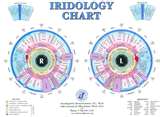 What is Iridology
What is Iridology
Iridology is the non-invasive science
of studying the iris of the eye to reveal conditions of tissues and organs in
the body. It is a quick, accurate and painless system of health analysis
through the examination of the coloured part of the eye known as the iris.
Proclaimed throughout the ages as
"windows of the soul", the eyes are now acknowledged as mirrors of
the body and compared to miniature television screens recording the condition
of the various organs and tissues throughout the body.
The iris is an extension of the brain
endowed with many thousands of nerve endings, microscopic blood vessels, as
well as muscle and connective tissue. Every organ is connected to the iris via
the nervous system and the nerve fibers receiving their impulses through the
optic nerve, optic thalami, and the spinal cord. The iris records information
about the state and functioning of every organ in the body as well as levels of
inflammation and toxicity. This enables the underlying cause of the symptoms we
may experience to be detected and removed.
The greatest advantage of iridology over other forms of health screening is
that changes appear in the iris before the physical symptoms actually develops.
Therefore, preventive action may be taken to improve health and avoid those
diseases which might otherwise follow.
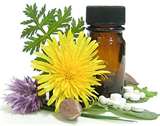 What Is Homeopathy
What Is Homeopathy
Homeopathy (a Greek word meaning
"similar suffering") is a system of medicine which treats disease by
the use of natural substances that, when administered to a healthy person in a
more crude dose, produce symptoms similar to the condition for which they are
being treated. When a small, often infinitesimal dose of a substance is
administered to a person who exhibits symptoms of illness, that substance can
stimulate the body's own healing abilities to affect a deep and long-lasting
cure. Homeopathy, according to Samuel Hahnemann, is based on the law Similiar
Similibus Curantur, or let "likes be cured by likes".
Homeopathic remedies are derived from
vegetable, mineral and animal substances and are used to treat a wide range of
conditions, including acute infections, injuries, chronic diseases and
emotional disorders. Remedies are carefully selected, according to each
individual case, to stimulate the body's own defense systems to heal body, mind
and spirit in harmony, without toxic side effects.
Homeopathic remedies work by
stimulating the body's own healing abilities.
 What Is Gemmotherapy
What Is Gemmotherapy
Gemmotherapy is a branch of
phytotherapy that uses buds and young shoots of trees and shrubs. They are
gathered in the spring, at a key stage of the natural growth cycle, and freshly
prepared in a macerate process using water, alcohol and glycerine.
Made of developing tissues, buds and
young shoots are a true concentrate of the plant's energy and
vitality.
Buds and young shoots are made of
embryonic tissues and enclose all the genetic information of the future plant.
In addition to containing vitamins, oligo-elements, and minerals, buds and
young shoots are richer in nucleic acids and growth hormones than other plant
tissues. They also contain other active substances, such as auxins and gibberellins,
which start to disappear after a plant reaches a certain point in its growth.
Given that they are extracts of developing tissues, gemmotherapy
remedies combine the properties of the whole plant, including the flowers, the
leaves, the fruits, the sapwood, and the rootlets.
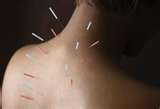 What is Acupuncture
What is Acupuncture
Acupuncture is an ancient form of
Chinese medicine involving the insertion of solid filiform acupuncture needles
into the skin at specific points on the body to achieve a therapeutic effect.
Acupuncture is used to encourage
natural healing, improve mood and energy, reduce or relieve pain and improve
function of affected areas of the body. It is safe and effective and is often
successfully used as an alternative to medications or even surgery.
Acupuncture points (also referred to as
‘acupoints’) are places on the skin that have a lower resistance to the passage
of electricity than the surrounding skin and are part of a network of points
that were mapped centuries ago by the Chinese. Most are found along ‘meridians’
or ‘channels’ that are believed to be the pathways by which energy or Qi
(pronounced ‘Chi’) flows through the body.
Acupoints are located either by
identifying anatomical landmarks or by the classical method (for example: “the
point where the middle finger touches the thigh when standing at attention”).
Other related techniques:
- Electro-acupuncture:
needles are electrically stimulated by various frequencies and voltages by
attachment to a battery-powered machine using wires with small clips on the
ends. Low frequency stimulation (2-4 Hz) results in a slow onset of pain relief
that outlasts the treatment for hours to days and is often cumulative by
repeating treatments. High frequency stimulation (80-200 Hz) results in a
pain-blocking effect that is fast in onset but does not usually outlast the
stimulation.
- Auricular acupuncture: the
ear is a ‘micro system’, meaning that there is a point on the ear that
represents every part of the body.
- Acupressure: a technique
involving pressure on acupuncture points using the thumbs or fingers, capable
of giving relief of symptoms in responsive individuals.
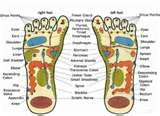 What is Reflexology
What is Reflexology
Reflexology is a focused pressure
technique that is a gentle, non-invasive therapy based on the principle
that there are zones and reflexes in the feet, hands and ears that correspond
to every organ, gland and part of the body. It is a whole body treatment -- not
just a massage.
In a reflexology treatment, pressure is
exerted on these reflexes by the thumbs and fingers, combining this with
massage, relaxation and joint mobilization techniques.When the reflexes are
stimulated, the body's natural electrical energy works along the nervous system
to clear any blockages in the corresponding zones. A reflexology session seems
to break up deposits (felt as a sandy or gritty area under the skin) which may interfere
with this natural flow of the body's energy.
Manipulating specific reflexes removes
stress, activating a parasympathetic response in the body to enable the
disharmonies to be released by a physiological change in the body. Thus the
result is homeostasis (internal balance) in the body.
Homeostasis is the
"automatic" process that the body incorporates to bring it back to
the "normal" state. For example, if the blood pressure is abnormal,
the kidneys will secrete the enzyme renin which is involved with
blood pressure, and the hormone, erythropoietin that increases the
rate of red blood cell production.
When we are stressed our body's
defenses break down and we become more susceptible to illness and disease.
Reflexology reduces stress by generating deep tranquil relaxation, helping the
body balance itself and allowing healing energy to flow.
Blood needs to flow freely throughout
the body carrying oxygen and nutrients to all the cells and removing the waste
products of metabolism and other toxins. By reducing stress and tension,
reflexology allows the cardiovascular vessels to conduct the flow of blood
naturally and easily.
By stimulating more than 7,000 nerves
in the feet, reflexology encourages the opening and clearing of neural
pathways. It interrupts pain pathways, reducing pain.
Reflexology stimulates the lymphatic
system thus reducing risk of infection. It cleanses the body of toxins and
impurities and also stimulates the production of endorphins, leading to an
improved immune system and sense of well-being.
Reflexology revitalizes energy
throughout the body by relaxing and opening up energy pathways.
 What is Bio-Meridian Testing
What is Bio-Meridian Testing
Bio-Meridian unit has the capacity to
non-invasively assess the energy meridians (channels) of the body and
determines functionality of organs and tissues of your body accurately.
Bio-Meridian testing is a non-invasive
method used to assess the energy meridians (channels) of the body, and it can
tell you:
- The functional status of your meridians
and their related organs, systems, or functions, by determining if they are
stressed, balanced, or weakened, and by how much.
- Which specific nutritional products
will bring your unbalanced meridians back in balance.
- If you have specific sensitivities to
foods, molds pollens, etc.The Bio-Meridian machine has blended the theories of
Chinese Medicine, Electro-acupuncture, and Homotoxicology together to produce
an assessment instrument that recommends the use of various supplements to
normalize body systems.
The Chinese system considers that the health of the body is regulated by
the proper flow of chi or life force, through the meridians. Along the
meridians are acupuncture points which correspond to the health of various
organ systems. Electro-acupuncture theory posits that when the meridians
are blocked, that blockage or excessive flow through these points will produce
a local skin effect seen as a change in skin resistance. High resistance
is taken as a blockage, low resistance is taken as a manifestation of excess,
and a middle resistance as indication of proper flow or organ balance.
The theories of Dr. Heinrich Reckeweg became the practice known as
Homotoxicology. This method is based upon the theory that disease
conditions develop initially as an inflammatory expression where the body tries
to throw off disease by hot, red, painful eruptions, diarrhea, and vomiting,
etc. But, if the body cannot throw off the toxin or infection by this hot
inflammatory process, then the organ function becomes depressed and the low
functioning tissues become subject to degeneration, and tissue in its lowest
state can develop degenerative diseases.
The Bio-Meridian system consists of using two electrodes: one electrode
held in a hand, while the other electrode is placed upon specific acupuncture
points on the other hand. These points correspond to major body organs
and system function. The machine and its associated computer record the
skin resistance after the electrode is placed on the acupuncture point.
The high and low readings are then correlated with body organs and
systems, giving a representation of inflammation or organ and system depression.
 What is EIS (Electro Interstitial Scan)
What is EIS (Electro Interstitial Scan)
The Electro Interstitial Scan
(EIS) device is a computerized, electro-medical system
which is safe, non-invasive, with no side-effects, and no adverse
reactions. Scans on human subjects take only 3 minutes and provide
immediate, 3-dimensional (3-D) image models as well as hard copy text reports.
The EIS provides traditional
medical physiological values based on the body's interstitial fluid
compartment.
The EIS System is a new,
scientifically validated, total body health scanning device that
allows health practitioners to, quickly and non-invasively, estimate
the health status of the major organs of the body helping them make better
decisions as regards client treatment. The Electro Interstitial
Scan system is a hugely valuable, affordable tool for practitioners giving
clients a very good overview of their current health status. It computes the
data from the non-invasive 3 minute body scan to give:
•
3 D Body Image
•
Complete Evaluation of:
o All body systems including functional
risk analysis
o Interstitial electrolyte, hormonal,
neurotransmitter balance
o Body composition analysis
BMI, lean mass, fat mass and hydration levels
o Interstitial pH showing body acid/alkali
balance
o Oxidative stress potential
• Computer
generated therapeutic guidelines:
o Further medical tests
o Personalized nutrition and
micro-nutrition guidelines
o Adjunctive therapies
•
Objectively monitors:
o Imbalances
o Pathologies
o Treatment effectiveness
The EIS system can
detect organ pathologies by measuring the relative health of the fluid
surrounding the organs. This complex form of bio-impedance testing
can often reveal disease patterns before symptoms are manifest. Extra
time and early detection often equals greater treatment success. The EIS
system gives practitioners the ability to monitor the effect of treatment
also enabling the client to visually see the difference through high quality 3D
imaging creating a mind-body connection.
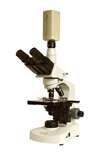 What is Dark Field Microscopic Blood Analysis
What is Dark Field Microscopic Blood Analysis
Viewing a fresh, natural blood sample
(a sample not altered with any stains, etc., needed for normal microscopic
exams), under the technology of a Dark Field microscope, will reveal conditions
of your blood differently from a basic diagnosis of a regular blood test performed in a lab. It is an excellent addition, or complement, to the standard laboratory blood tests.
The Dark Field microscope is a
microscope designed to permit diversion of light rays and illumination, from
the side, so that details appear light against a dark background; as opposed to
light passing straight through the specimen. If bright lights from the
microscope pass directly through the specimen, the heat from the light source
will kill the red blood cells (RBCs) faster. Also, by diverting the light rays,
a greater amount of depth and details can be viewed. (Almost like a
three-dimension view).
Dark Field microscopy thus allows a
health professional to evaluate the shapes and other properties of individual
blood cells, indicating nutritional conditions which can be adversely affecting
a person's health. The advantage of this analysis over standard blood tests,
which detect chemical changes in the blood, is the ability of dark field
microscopy to detect nutritional disorders sooner, when the problem is in its
infancy stages. By monitoring the blood's condition, a health professional can
assist in "balancing" the blood by giving dietary and lifestyle
recommendations which can enhance health.
In Dark Field microscopy, one is able
to observe "live blood."
What one sees in the mobile situation
are the usual red blood cells, white blood cells, plasma—and what is floating
in the plasma. Microbial activity, undigested food, fungi, and crystals are all
apparent as is the capacity of the red blood cells to circulate and the white
blood cells to devour morbid matter.
In live blood cell analysis, Dark
Field microscopy is best used to understand and view the cause of improper
nutrition and problems in the body.

 What
Is Medical Herbalism / Phytotherapy
What
Is Medical Herbalism / Phytotherapy
Phytotherapy is modern herbal medicine
at its best. Medical herbalism is a traditional medicinal practice
based on the use of plants and plant extracts. It applies
scientific research and the highest professional standards to the practice of
herbal medicine.
In phytotherapy, plant medicines are
selected mainly to stimulate or strengthen the body’s normal functions, and so
help the body heal itself. Unlike orthodox drugs that have a single ingredient,
plant medicines contain many ingredients and may have several simultaneous
therapeutic actions in the body.
The phytotherapist approaches each
patient as a unique individual in making an analysis and assessing the
patient’s needs. Any herbal medicine prescribed may be a combination of plants
chosen for the therapeutic actions required to treat that individual.
Phytotherapy medicine can be in the
form of a tincture, tea, capsule, powder or tablet, and a lotion or cream for
topical use.
What is Chemstrip ®Test Analysis
The urine test strips allow rapid screening
for disease of the kidney and urogenital tract, carbohydrate metabolism
disorder (ie. diabetes mellitus), liver disease and hemolytic disorders.
 What is Gain Scan Analysis
What is Gain Scan Analysis
A Gait Scan Analysis
is a detailed examination of your walk and much can be determined from this.
The foot, being the foundation of our body which carries all of our weight and
absorbs all shock, has an effect on our body’s health.
We use the TOG
GaitScan™ System, which is a revolutionary diagnostic tool for assessing
an individual's bio-mechanics. It has an industry high 4096 sensors and
scans at an industry high 300Hz (scans per second).
This makes it
possible to assess the patient's bio-mechanical health and any problems that are
occurring.
These measurements
provide a detailed explanation of foot mechanics and assists us with
providing orthotic solutions for you.
The foot is an
intricate and mechanically complex structure made up of 26 major bones,
associated joints and soft tissue structures. The efficiency with which
the foot functions when walking depends on the way in which these bones and
joints move in relation to each other. Efficient and pain-free function
also depends heavily on the foot's angle to the leg and to the ground. If
things do not work well in any of these areas, painful problems may result.
Bio-mechanics refers to the analysis of
the foot and leg function and the diagnosis of any functional problems or
abnormalities.
Aching feet and
painful lower limb problems don't have to be endured. The cause of such
problems is often due to the misalignment of the joints and resulting soft
tissue stresses in the leg or foot. This can lead to common problems,
such as:
- Aching and over-tired feet
- Ankle sprains and weaknesses
- Over pronation (collapsing of arch)
- Sports related overuse injures
- Bunions
- Corns and callouses
- Painful toenails
But the pain caused
by these misalignments is not always restricted to the feet. Because our
feet take the strain of our daily activities, every step impacts directly
upwards through the body. This means that stress and pain may be
experienced in the joint of the following areas:
- Feet
- Hips
- Neck
- Knees
- Back
All of these parts of the body are connected to the feet via the skeleton. Effects may show as pain, instability, restricted movement or, in some cases, just fatigue.
The foot is an
impressive architectural and functional design, able to act as both a flexible
supportive base and a rigid lever. It is expected to work efficiently
under excessive loads and demands, often in extreme conditions imposed on it by
footwear and the environment in which it has to work. However, this
complex structure's function depends heavily on having its correct functional
angles and joint movements maintained.
In walking or running, the foot
needs to be flexible enough to absorb the shock of hitting the ground. It
also has to be firm enough not to collapse as the body's weight moves over it
at each and every step. No surprise that sometimes things start to go
wrong with the foot function, and pain or disability results. In most
cases, it is not until heavy or unusual demands are made on the feet by work,
sport, injury, or simply by the passage of time, that potential weaknesses are
revealed.
Orthotics reposition the foot structure
to achieve to achieve optimum skeletal balance, thereby reducing the stress and
pain on the joints that are causing the discomfort. They do this by
controlling joint movement, and by altering some angles to prevent excessive
motion.
Many orthotics look like arch supports,
but they are not intended to support the arch. Orthotics are angled
individually to control the heel and forefoot, and to prevent excessive
motion. The natural arch in the foot will in most cases become more
apparent while the orthotics are worn. There are many different types of
orthotics. The type that is used depends on the activity in which the
patient is involved, the shoes they want to wear, and the underlying foot
problem.
For further information, please go to the Good Health To You Ltd. website.